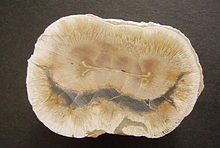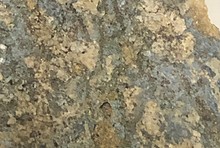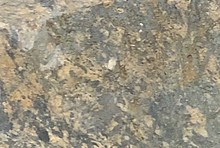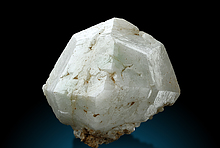Home PageAbout MindatThe Mindat ManualHistory of MindatCopyright StatusWho We AreContact UsAdvertise on Mindat
Donate to MindatCorporate SponsorshipSponsor a PageSponsored PagesMindat AdvertisersAdvertise on Mindat
Learning CenterWhat is a mineral?The most common minerals on earthInformation for EducatorsMindat ArticlesThe ElementsThe Rock H. Currier Digital LibraryGeologic Time
Minerals by PropertiesMinerals by ChemistryAdvanced Locality SearchRandom MineralRandom LocalitySearch by minIDLocalities Near MeSearch ArticlesSearch GlossaryMore Search Options
The Mindat ManualAdd a New PhotoRate PhotosLocality Edit ReportCoordinate Completion ReportAdd Glossary Item
Mining CompaniesStatisticsUsersMineral MuseumsClubs & OrganizationsMineral Shows & EventsThe Mindat DirectoryDevice SettingsThe Mineral Quiz
Photo SearchPhoto GalleriesSearch by ColorNew Photos TodayNew Photos YesterdayMembers' Photo GalleriesPast Photo of the Day GalleryPhotography
╳Discussions
💬 Home🔎 Search📅 LatestGroups
EducationOpen discussion area.Fakes & FraudsOpen discussion area.Field CollectingOpen discussion area.FossilsOpen discussion area.Gems and GemologyOpen discussion area.GeneralOpen discussion area.How to ContributeOpen discussion area.Identity HelpOpen discussion area.Improving Mindat.orgOpen discussion area.LocalitiesOpen discussion area.Lost and Stolen SpecimensOpen discussion area.MarketplaceOpen discussion area.MeteoritesOpen discussion area.Mindat ProductsOpen discussion area.Mineral ExchangesOpen discussion area.Mineral PhotographyOpen discussion area.Mineral ShowsOpen discussion area.Mineralogical ClassificationOpen discussion area.Mineralogy CourseOpen discussion area.MineralsOpen discussion area.Minerals and MuseumsOpen discussion area.PhotosOpen discussion area.Techniques for CollectorsOpen discussion area.The Rock H. Currier Digital LibraryOpen discussion area.UV MineralsOpen discussion area.Recent Images in Discussions
Mineralogical ClassificationIMA 2013-074 = nestolaite
12th Jul 2014 13:05 UTCMarco E. Ciriotti Manager
▪ Kasatkin, A.V., Plášil, J., Marty, J., Belakovskiy, D.I., Lykova, I.S. (2014): Nestolaite, CaSeO3·H2O, a new mineral from the Little Eva mine, Grand County, Utah, USA. Mineralogical Magazine, 78, 497-505.
Abstract:
Nestolaite (IMA 2013-074), CaSeO3·H2O, is a new mineral species from the Little Eva mine, Grand County, Utah, USA. It is named in honour of the prominent Italian mineralogist and crystallographer Fabrizio Nestola. The new mineral was found on sandstone matrix as rounded aggregates up to 2 mm across and up to 0.05 mm thick consisting of tightly intergrown oblique-angled, flattened to acicular crystals up to 30 μm long and up to 7 μm (very rarely up to 15 μm) thick. Nestolaite associates with cobaltomenite, gypsum, metarossite, orschallite and rossite. The new mineral is light violet and transparent with a white streak and vitreous lustre. The Mohs hardness is 2½. Nestolaite is brittle, has uneven fracture and perfect cleavage on {100}. The measured and calculated densities are Dmeas. = 3.18(2) g/cm3 and Dcalc. = 3.163 g/cm3. Optically, nestolaite is biaxial positive. The refractive indices are α = 1.642(3), β = 1.656(3), γ = 1.722(6). The measured 2V is 55(5)° and the calculated 2V is 51°. In transmitted light nestolaite is colourless. It does not show pleochroism but has strong pseudo-absorption caused by high birefringence. The chemical composition of nestolaite (wt.%, electron-microprobe data) is: CaO 28.97, SeO2 61.14, H2O (calc.) 9.75, total 99.86. The empirical formula calculated on the basis of 4 O a.p.f.u. (atoms per formula unit) is Ca0.96Se1.02O3·H2O. The Raman spectrum is dominated by the Se–O stretching and O–Se–O bending vibrations of the pyramidal SeO3 groups and O–H stretching modes of the H2O molecules. The mineral is monoclinic, space group P21/c, with a = 7.6502(9), b = 6.7473(10), c = 7.9358(13) Å, β = 108.542 (12)°, V = 388.37(10) Å3 and Z = 4. The eight strongest powder X-ray diffraction lines are : 7.277 (100)(100), 4.949 (110)(37), 3.767 (002)(29), 3.630 (200)(58), 3.371 (020)(24), 3.163 (2ˉ02)(74), 2.9783 (1ˉ21)(74) and 2.7231 (112)(31). The crystal structure of nestolaite was determined by means of the Rietveld refinement from the powder data to Rwp = 0.019. Nestolaite possesses a layered structure consisting of CaΦ–SeO3 sheets, composed of edge-sharing polyhedra. Adjacent sheets are held by H bonds emanating from the single (H2O) group within the sheets. The nestolaite structure is topologically unique.

14th Jul 2014 09:54 UTCKnut Edvard Larsen 🌟 Manager




Mindat.org is an outreach project of the Hudson Institute of Mineralogy, a 501(c)(3) not-for-profit organization.
Copyright © mindat.org and the Hudson Institute of Mineralogy 1993-2024, except where stated. Most political location boundaries are © OpenStreetMap contributors. Mindat.org relies on the contributions of thousands of members and supporters. Founded in 2000 by Jolyon Ralph.
Privacy Policy - Terms & Conditions - Contact Us / DMCA issues - Report a bug/vulnerability Current server date and time: April 23, 2024 14:37:01
Copyright © mindat.org and the Hudson Institute of Mineralogy 1993-2024, except where stated. Most political location boundaries are © OpenStreetMap contributors. Mindat.org relies on the contributions of thousands of members and supporters. Founded in 2000 by Jolyon Ralph.
Privacy Policy - Terms & Conditions - Contact Us / DMCA issues - Report a bug/vulnerability Current server date and time: April 23, 2024 14:37:01











